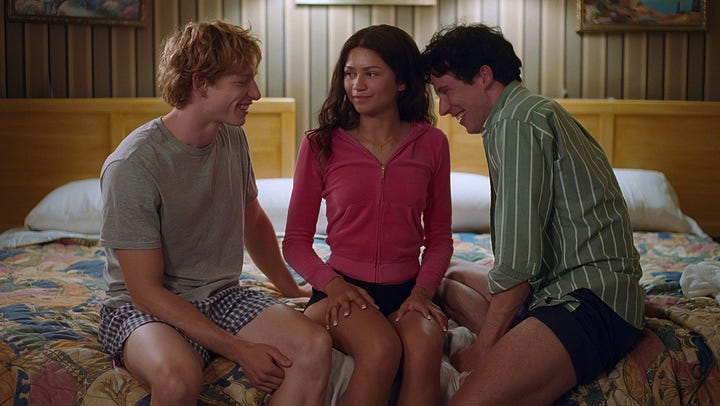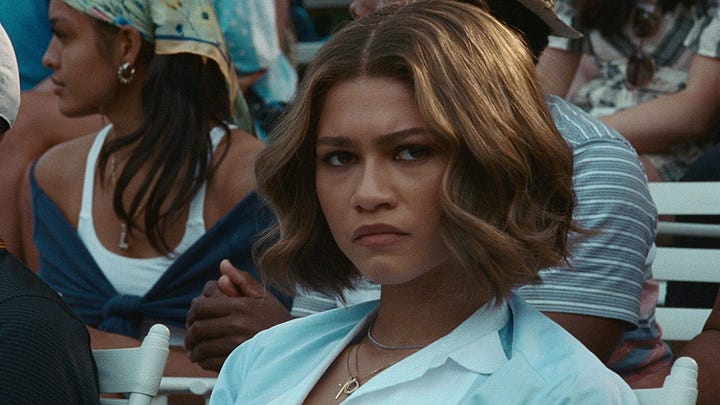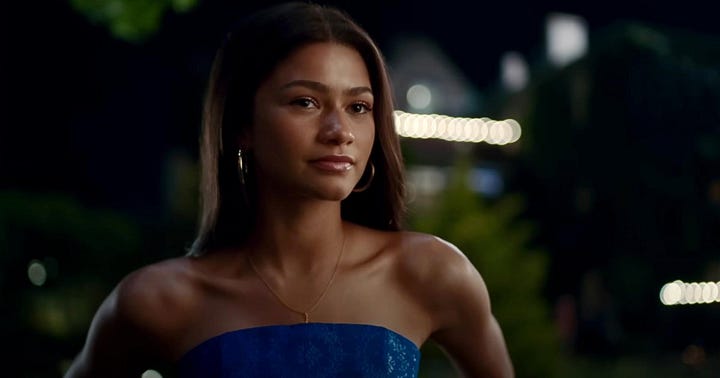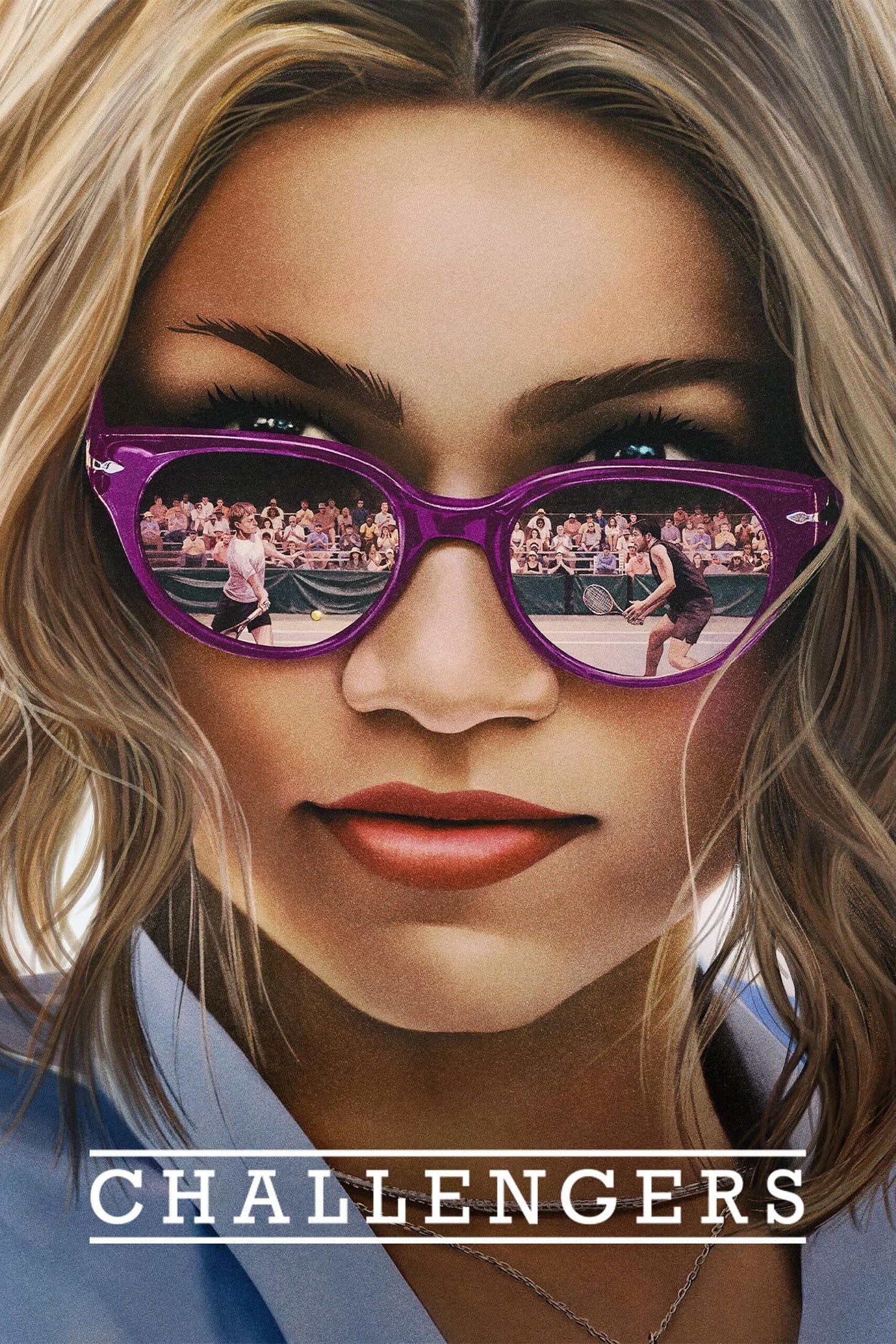Challengers (2024)
A review w/ spoilers*




Last night I had a staggering movie going experience. I felt like I was being sold a lie a minute sitting through the agonizing commercials, the movie previews, and till the end of Challengers. Back to back promos for military branches, painting them as organizations of peace and innovation (a rally during war time). I understand there’s nothing new about that experience. Consumerism and propaganda tactics have a long tradition at the cinema. We’ve been advertised a false reality for so long it’s hard to think about our world without using the images fed to us to line that canvas. Take how modern horror treats rural living. It’s very common to see (in fact I saw) a movie trailer where a young couple vacations in a secluded part of the country to get away from it all. The idea of ruralism as a peaceful alternative to stressful urban living is benign and actually has some merit to think about in a country as urbanized and unhappy as ours. Yet the common movie trope is that there are evil forces lurking in the dark outskirts, that living ‘out there’ turns people into kooks or murderous cultists. One movie by itself with this premise can be harmless, but within a whole genre that trends this way it feels insidious. Almost like we are supposed to all fear each other. Challengers is another example of a genre movie that warps human reality into a lifeless opportunity to sell things.
When a movie feels more like a commercial or a music video then why even bother with the movie going experience. The distinguishers between television and film are fading away over time. In one particularly unabashed scene we cut between three different product placements for Coke, Adidas, and the U.S. Open. It was shameless, the way Josh O’Connor was most likely told to hold that CocaCola label perfectly centered in the frame. Those three brands are far from the only ones displayed. Tennis, and sports events in general, flash a ton of advertising so I understand that the film’s stuck in that universe. Still there are ways to artfully sidestep brazen product placement.
I don’t want to spend much time trying to analyze the relationship between Tashi, Art and Patrick. The film doesn’t give you enough about why these three are fatefully attached to each other besides vapid attractions. Yes all three are enamored by one another but what’s the motivation to stay in this toxic ménage à trois dynamic for so long? Zendaya plays Tashi, a master manipulator trying to mold her husband Art Donaldson into the star tennis player she was supposed to be before her injury. And her “little white boys” Art and Patrick feel like pawns that are content to be pawns. Men who don’t have any freewill and are solely motivated by their lust for this supermodel of a woman. In a way I don’t blame them. My disconnect comes because there’s a lack of depth with the characters and their relationships. Each of them seems to have a singular focus; Tashi wants vicarious glory through Art, Art wants to be loved, and Patrick wants Art’s life. But there is no depth to the desires. Time is never spent on why Tashi loves tennis more than people or why Art and Pat let their, supposedly strong bond, get broken so easily by a “home wrecker” that forecasted her own home wrecking. And look, as a seductive art piece it succeeds, for the most part, but as a story about real people it reduces its characters to their base desires while pretending they are complex. Maybe I don’t understand Romance—as I’ve been told. I am content to treat it as just a romantic fantasy and give it credit for being hot, but it was also a long drawn out tease.
There was no reason for this experience to be more than two hours long! Half of it was in never ending slow-mo where I felt like the same tennis ball was being served for half an hour. The dreaded slow motion, which can be good for a sporty movie to capture athletic movements and build suspense, but here it was overused to a point where it left us thinking “get on with it already”. Thank goodness some of my theater neighbors were also moaning about this because I felt alone, trapped in a drugged fugue state. So much of the film was disorienting. For a period you are meant to feel like a tennis ball being battered around through the camera. Editing wise this movie had the same problem that so many modern movies have; death from a thousand cuts. And the slowly unraveling chopped timeline executed so many arbitrary flashbacks and flash forwards. Eight weeks before, two days forward, then a five year flashback, all when you could tell this story sequentially with similar suspense building and less confusion.
Seeing this movie was a spur of the moment, going in blind experience. I know now that I was not the target audience. Today I mentioned it to a friend and he ended up watching the trailer. The text I got back: “looked like a bit of a teenager movie”. I don’t mean to spoil the enjoyment for anyone with this review. From a certain angle I did have fun with Challengers. Sometimes simply devouring some eye candy is what the mood demands.


